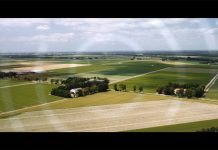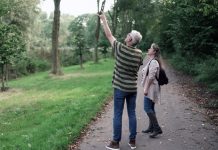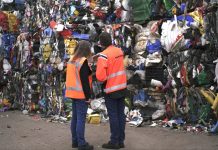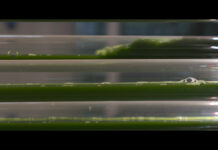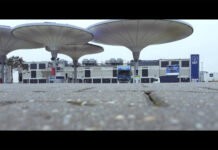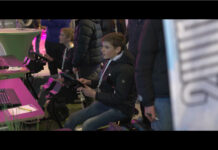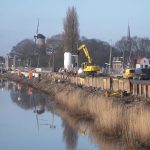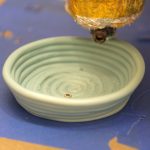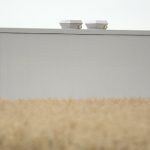Verlies van biodiversiteit in de stad
Biodiversiteit of te wel de verscheidenheid van leven, wordt gestaag minder. Steeds vaker worden we hiervoor gewaarschuwd. Wat is nu precies dat verlies van biodiversiteit en waar gebeurt dat dan? Op zoek naar antwoorden gingen we op pad met Ton Eggenhuizen, Stadsecoloog in Almere. Want ook in de stad is er verlies van biodiversiteit.
Visie Ecologie
De gemeenteraad van Almere heeft de ‘Visie Ecologie‘ aangenomen. Volgens Ton is het doel hiervan, ‘om bekendheid te geven aan de rijke natuur in de stad, in de hoop dat iedereen daar ook een bijdrage aan levert. Bij de ‘Visie Ecologie’ wordt uitgegaan van de drie V’s de VVV, de V van verbinden, de V van verbinden en de V van verbinden. Waarbij we natuurgebieden onderling willen verbinden, maar ook verbinden van mensen met natuur. Dat is misschien nog wel het allerbelangrijkste. Verbindt de mens met natuur en verbindt ook de van nature aanwezige context met je planten. Dat laatste is wat lastiger, maar daarin zeggen we eigenlijk, we willen niet te veel natuur maken. We willen de kansen die de bodem, het klimaat en het watersysteem bieden benutten om een ecologisch systeem te maken. Dus niet te veel maken, maar gewoon de kansen benutten die het systeem ons geeft.’
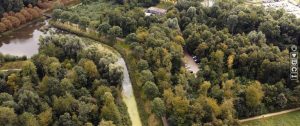
Natuursystemen verbinden
Ton vertelt over het belang om natuurgebieden met elkaar te verbinden. Hiermee doelt hij niet alleen op parken en groenstroken van de gemeente, maar ook op tuinen van de inwoners. ‘Als jij je tuin bijvoorbeeld egel vriendelijk maakt en jouw buren hebben een harde schutting met zo’n betonrand aan de onderkant, dan kan die egel nergens naar toe. Dan kan jij wel een prachtig mooie egelvriendelijke tuin maken, maar die egel heeft veel meer tuinen nodig, die kan niet leven op één tuin.’
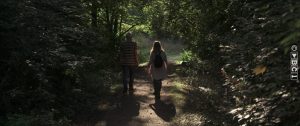
Maken meer planten en bomen verschil?
Als we thuis of bij het bedrijf meer planten in de tuin zetten en de gemeente plant meer bomen zijn we er dan of is er meer nodig? Ton vindt dit belangrijke stappen. Wel geeft hij aan dat het ook dan het beste is om dat op mekaar af te stemmen.
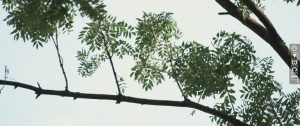
Zijn verduurzaming en biodiversiteitsbehoud duur?
“Nee, zegt Ton, dat heeft vooral ook met je perspectief van tijd te maken. Het kan misschien op de korte termijn duur zijn maar op de lange termijn is het is juist heel erg kostenefficiënt, levert het geld op. Alleen is het vaak zo dat we met onze budgetten in een hele korte tijdframe zitten. Neem bijvoorbeeld groen en buiten spelen, kinderen die buiten spelen zijn gezonder. Minder last van obesitas. Obesitas levert later, als die kinderen 50 jaar oud zijn, hartproblemen op. Maar ja dat is over 50 jaar, terwijl we nu met budgetten zitten die vaak maar voor één of vier of vijf jaar zijn. Terwijl die vermeden zorgkosten, ja dat gaat over een veel langere periode. Dus we moeten ook leren kijken over veel langere periodes, daar moeten we echt nog wel een hele verandering in bewerkstelligen.”
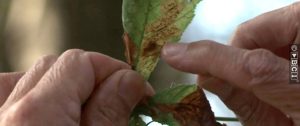
Wil jij weten wat Ton nog meer hierover te vertellen heeft? Kijk dan naar de video.
Zie ook:
Natuurlandbouw beter voor biodiversiteit
Circulariteit noodzaak voor behoud winstgevendheid
Biodiversity loss in the city
Biodiversity or variety of life, is gradually decreasing. More and more we’re warned about this.
What exactly is the loss of biodiversity and where does it happen? Looking for answers we set out with Ton Eggenhuizen, urban ecologist in Almere. Because in the city there’s loss of biodiversity too.
Vision Ecology
The city council of Almere has passed the ‘Vision Ecology’. According to Ton with the purpose ‘to give more attention to the rich nature in the city, hoping everyone will contribute to this. The ‘Vision Ecology’ is based on the three Cs: the C of connecting, the C of connecting and the C of connecting. We want to connect natural areas with each other, but also to connect people with nature.
Maybe that is most important. Connecting people with nature and also connect the naturally present context with your plants. The latter is harder, but what we actually say with that is, we don’t want to make to much nature. We want to use the opportunities the soil, the climate and the water system offer to produce an ecological system. Not to make a lot, but to use the opportunities the system gives us. 
Connecting natural systems
Ton tells us about the importance to connect natural areas. By this he doesn’t only mean the parks and green areas of the city, but also the gardens of the residents. ‘For example, if you make your garden hedgehog friendly and your neighbors have a hard fence with a concrete edge at the bottom, then that hedgehog has nowhere to go. Then you can make a beautiful hedgehog-friendly garden, but that hedgehog needs many more gardens, he can’t live on one garden.’
Will more plants and trees make a difference?
If we put more plants in our garden at home or at the company and the municipality plants more trees, is that the solution or is more needed? Ton thinks these are important steps. He does indicate, however, that it is best to coordinate that. 
Are sustainability and biodiversity conservation expensive?
“No, says Ton, that also has to do with your perspective of time. It may be expensive in the short term, but in the long term it’s just very cost efficient and makes money. However our budgets are often for a very short time frame. For example take greenery and playing outside, children who play outside are healthier. Less suffering of obesity. Obesity causes heart problems later on, when those children are 50 years old. But that will be in 50 years, while the budgets we have now are often for one or four or five years. And those avoided health costs, that’s over a much longer period of time. So we have to learn to look at much longer periods, we really have to make a big change in that.”
Do you want to know what else Ton has to say about this? Then watch the video.
Also interesting:
Circulariteit noodzaak voor behoud winstgevendheid
Natural farming better for biodiversity



